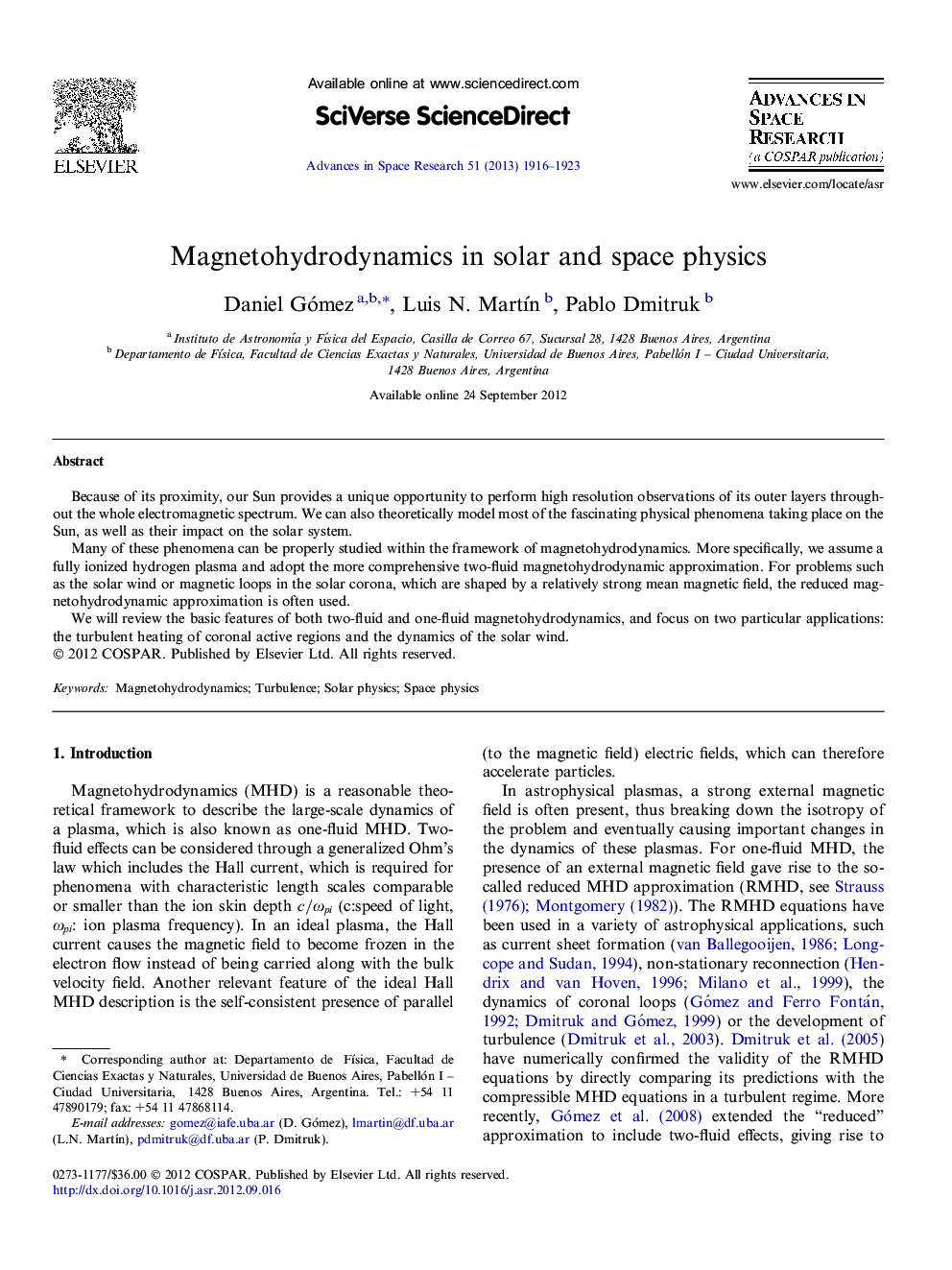| Article ID | Journal | Published Year | Pages | File Type |
|---|---|---|---|---|
| 1765406 | Advances in Space Research | 2013 | 8 Pages |
Because of its proximity, our Sun provides a unique opportunity to perform high resolution observations of its outer layers throughout the whole electromagnetic spectrum. We can also theoretically model most of the fascinating physical phenomena taking place on the Sun, as well as their impact on the solar system.Many of these phenomena can be properly studied within the framework of magnetohydrodynamics. More specifically, we assume a fully ionized hydrogen plasma and adopt the more comprehensive two-fluid magnetohydrodynamic approximation. For problems such as the solar wind or magnetic loops in the solar corona, which are shaped by a relatively strong mean magnetic field, the reduced magnetohydrodynamic approximation is often used.We will review the basic features of both two-fluid and one-fluid magnetohydrodynamics, and focus on two particular applications: the turbulent heating of coronal active regions and the dynamics of the solar wind.
